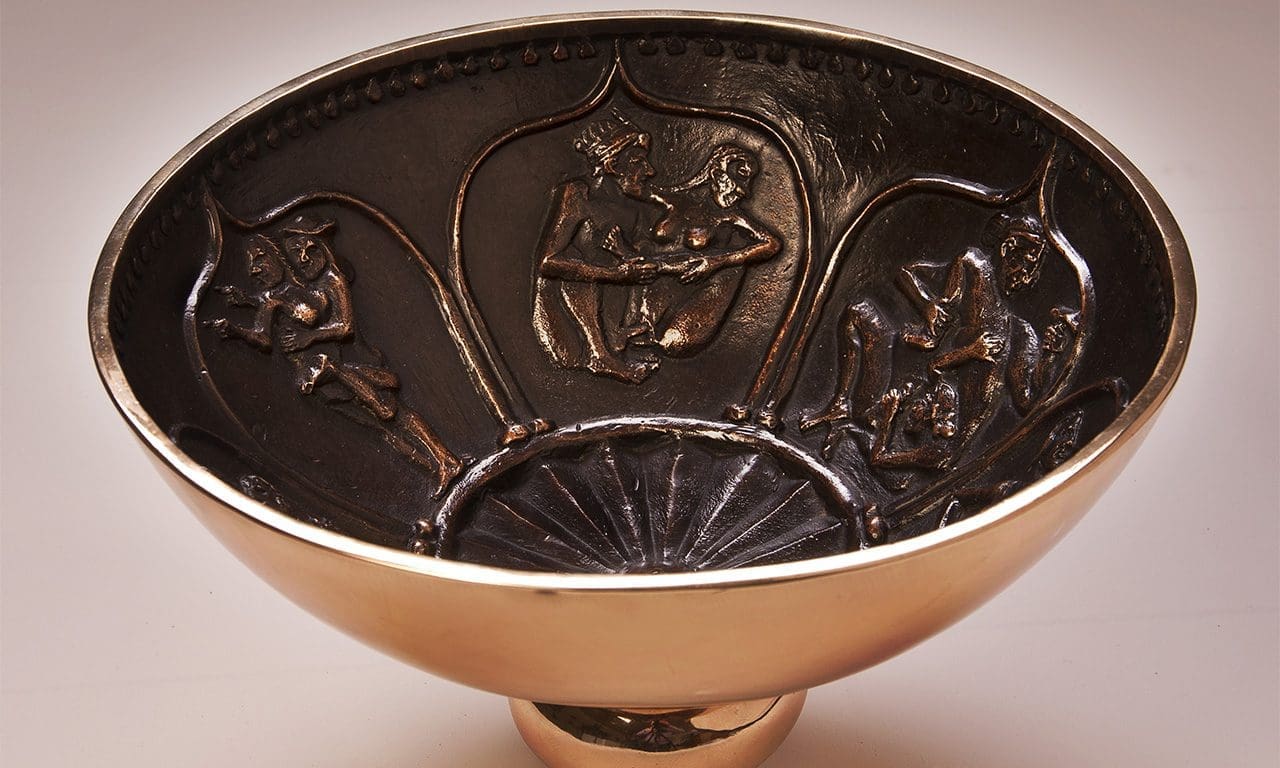Shiva and Parvati: A short Description
This piece is inspired by the Kama Sutra, the ancient Indian Hindu text of human sexual behaviour. The illustrations in the Kama Sutra show the God Shiva with his wife Parvati in various positions, which are modelled on the inside of this Bowl in very light relief, after forming the bowl and base by hand. I wanted to represent it in a precious way. There are 6 figures in total. It was very difficult to do. It was created for the Ib Jorgenson. These pieces are limited edition. Shiva is a supreme deity in Hindu beliefs, representing all aspects of nature and life on earth.
Some Interesting Facts:
Parvati is the Hindu goddess of fertility, love and beauty. As well as of divine strength and power. She is known by many other names. She is the gentle and nurturing form of Mahadevi and one of the central deities of Shaktism. She is the Mother goddess in Hinduism, and has many attributes and aspects. Along with Lakshmi and Saraswati, she forms the trinity of Hindu goddesses (Tridevi).[10]
Parvati is the wife of the Hindu god Shiva. She is the protector, the destroyer, and regenerator of the universe. She is the reincarnation of Sati, Shiva’s first wife who died during a yajna. Parvati is the daughter of the mountain king Himavan and queen Mena. Parvati is the mother of Hindu deities Ganesha and Kartikeya. The Puranas also referenced her to be the sister of the river goddess Ganga. And sistewr of Vishnu. She is the divine energy between a man and a woman. This is like the energy of Shiva and Shakti. She is also one of the five equivalent deities. They are worshipped in Panchayatana puja of the Smarta Tradition of Hinduism.[14]
Parvati is a combination of various Vedic gods Rudra and Agni. Parvati in Puranas text is a combination of wives of Rudra. The symbolism of Parvati evolved fusing Uma, Haimavati, Ambika in one aspect. And the more ferocious, destructive Kali, Gauri, Nirriti in another aspect.
Parvati and Shiva are often symbolized by a yoni and a linga. In ancient literature, yoni means womb and place of gestation, the yoni-linga metaphor represents origin, source or regenerative power. The linga-yoni icon is widespread, found in Shaivite Hindu temples of South Asia and Southeast Asia. Often called Shivalinga, it almost always has both linga and the yoni. The icon represents the interdependence and union of feminine and masculine energies. Parvati and Shiva are shown in various forms of sexual union.
Courtesy of: Wikipedia




